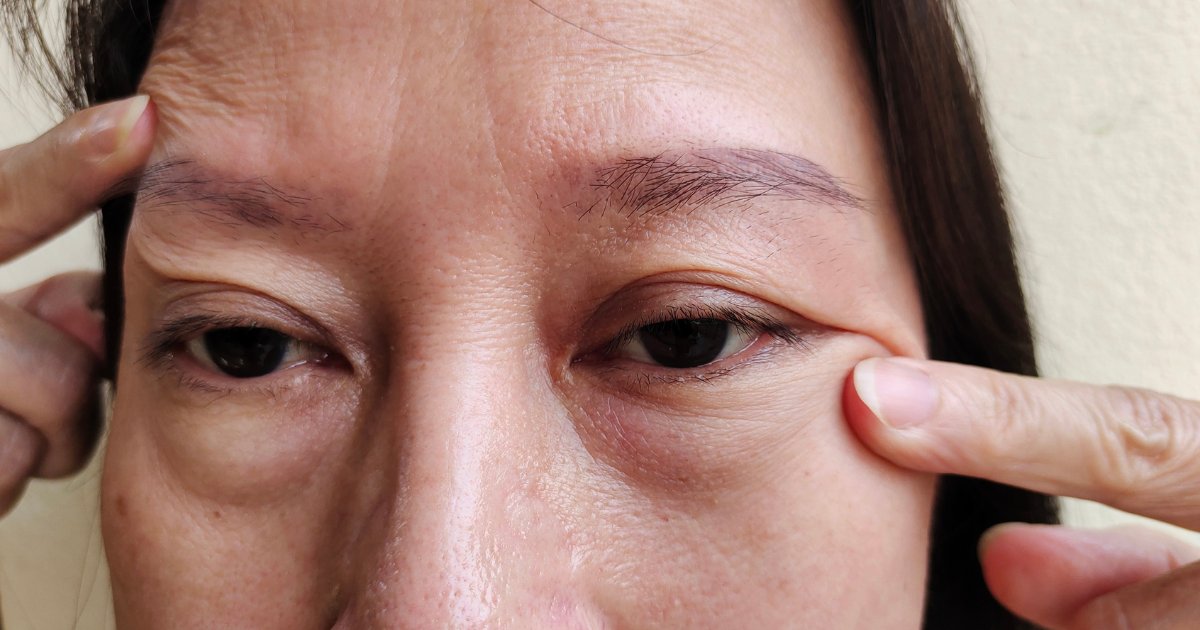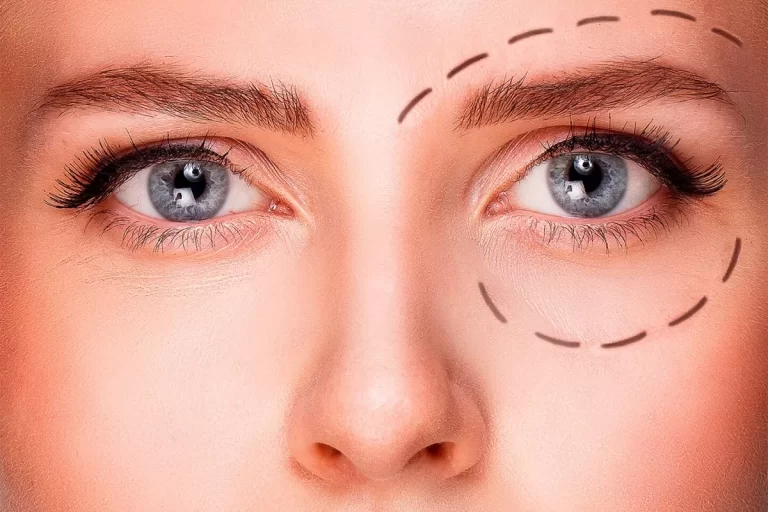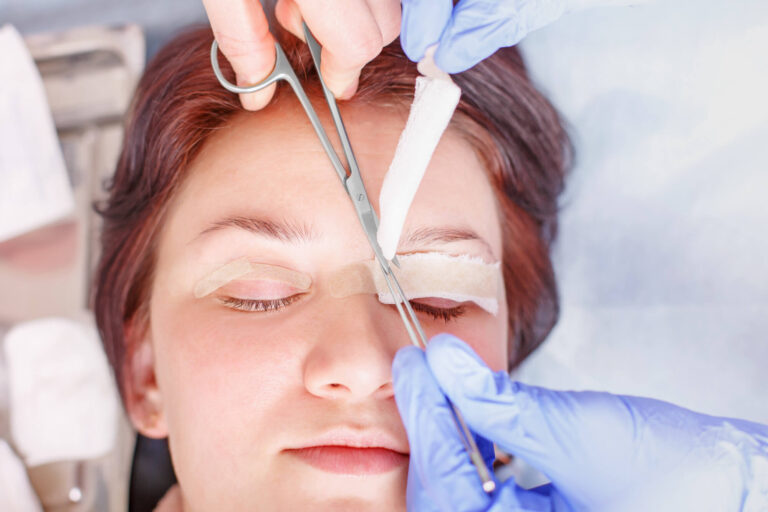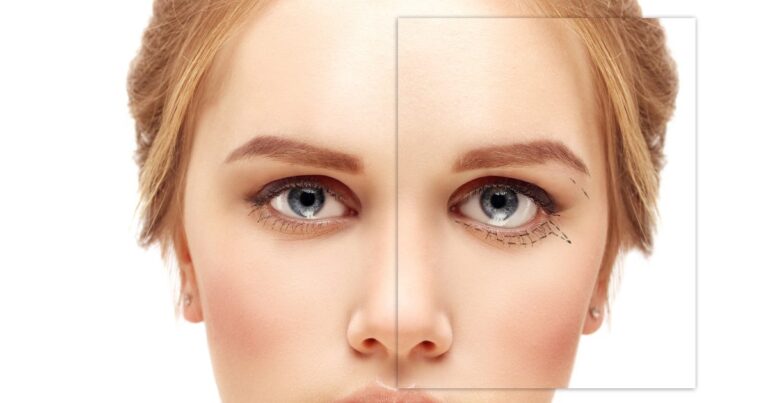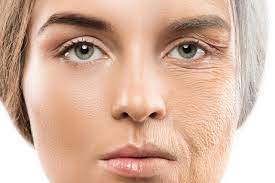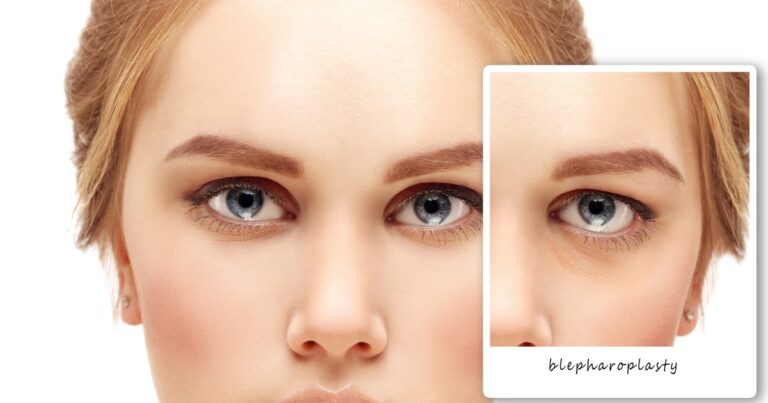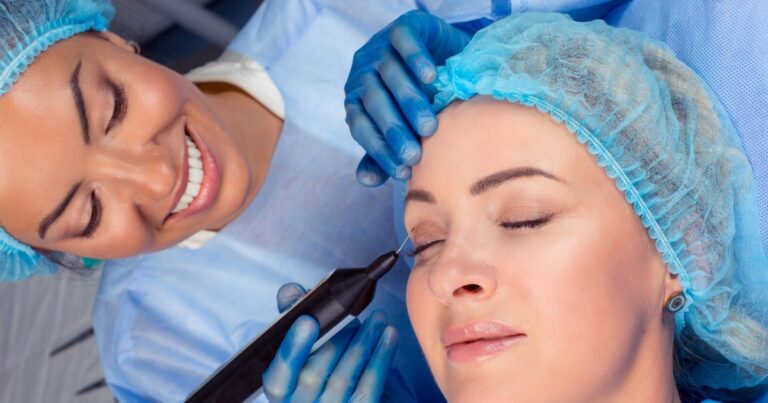Explore Ptosis and Blepharoplasty: specialised eyelid surgeries for drooping eyelids and rejuvenation, promising enhanced appearance and vision.
Ptosis And Blepharoplasty
Ptosis, commonly known as droopy eyelids, and blepharoplasty (eyelid surgery) are topics of significant importance for patients seeking facial rejuvenation treatments in Dubai. This comprehensive guide delves into the key considerations around ptosis, blepharoplasty, and finding the right plastic surgeon for these facial procedures in the UAE.
Understanding Ptosis and Its Causes
Ptosis refers to a drooping or falling of the upper eyelids, which can affect one or both eyes. It typically occurs from one of these factors:
- Ageing and muscle stretching/fatigue – The levator muscle that lifts the eyelid can stretch and lose elasticity over time. Ptosis often emerges in later adulthood due to years of using these muscles.
- Trauma/injury – Accidents or injuries around the eye/eyelid area can damage the levator muscle or nervous connections, resulting in acquired ptosis.
- Medical conditions – Diseases like stroke, tumour, neurodegenerative disease, or diabetes can contribute to ptosis development.
- Congenital ptosis – A small percentage of ptosis cases exist from birth, often traced to underdeveloped levator muscles or damaged nerves.
The severity of ptosis ranges considerably among patients. Mild cases showcase slightly lowered eyelids, while advanced ptosis can cover a large portion of the eye, obstructing vision. The key is evaluating the degree of visual obstruction and aesthetic impairment to determine suitable treatment options.
How Blepharoplasty Surgery Treats Ptosis and Excess Eyelid Skin
For mild to moderate ptosis without severe vision blockage, blepharoplasty can successfully correct droopy eyelids and create a more youthful, refreshed look around the eyes. It works by:
Book A Consultation With Dr Tarek Bayazid
Top-rated Plastic Surgeon For Eyelid Surgery in Dubai
Installment Plan Available
- Removing excess skin/fat – Eliminates sagging skin and deposits that weigh down the eyelids over time.
- Lifting & tightening – Eyelid muscles and ligaments are tightened, often along with a brow lift, for optimal rejuvenation results.
- Reshaping contours – Customise contours for each patient for an aesthetically pleasing upper eyelid appearance.
Blepharoplasty represents one of the most popular and effective facial procedures for both functional and cosmetic improvement around the eye region, providing natural-looking outcomes.
Types of Blepharoplasty Procedures
There are a few different categories and approaches to blepharoplasty surgery:
| Type of Blepharoplasty | Description | Purpose |
| Upper Eyelid Blepharoplasty | Involves removing excess skin, fat, and muscle from the upper eyelids. | Primarily to improve the field of vision and aesthetic appearance. |
| Lower Eyelid Blepharoplasty | Addresses under-eye bags, wrinkles, and excess skin on the lower eyelids. | Aimed at rejuvenating the area below the eyes. |
| Double Eyelid Surgery | Creates a crease in the upper eyelid in people who lack one naturally. | Popular in East Asia for aesthetic reasons, giving the appearance of larger, more open eyes. |
| Transconjunctival Blepharoplasty | Removes or repositions fat in the lower eyelid through an incision inside the eyelid. | Reduces under-eye bags with minimal scarring and no skin removal. |
| Functional Blepharoplasty | Performed to remove vision obstructions caused by droopy eyelids. | To improve peripheral vision and overall eye function. |
| Asian Blepharoplasty | Tailored for Asian eyelids, it can involve creating a double eyelid or removing excess tissue. | To enhance the natural features of Asian eyelids, often for aesthetic enhancement. |
| Revision Blepharoplasty | Corrective surgery for issues arising from previous eyelid surgeries. | To address complications or unsatisfactory results from earlier procedures. |
This table provides a basic overview of the various blepharoplasty procedures, each tailored to specific aesthetic or functional needs.
Recovery Timeline After Ptosis and Blepharoplasty Procedures
Recovering from ptosis and blepharoplasty procedures involves a structured timeline to ensure optimal healing and results. Below is an informative table outlining this recovery process:
| Time After Surgery | Expected Recovery Milestones |
| 24-48 Hours | Swelling and bruising peak; rest with head elevated. |
| 1 Week | Removal of stitches; noticeable reduction in swelling. |
| 2 Weeks | The majority of bruising resolved; return to non-strenuous work. |
| 1 Month | Most swelling subsides; gradual return to normal activities. |
| 3-6 Months | The final results are visible; scars begin to fade significantly. |
| 1 Year | Complete healing and scar maturation. |
This table provides a general guide to the recovery timeline following ptosis and blepharoplasty procedures. It’s important to note that individual experiences may vary, and following the surgeon’s post-operative care instructions is crucial for a smooth recovery and the best possible outcome.
Choosing the Best Ptosis and Blepharoplasty Surgeon in Dubai
Selecting a proper surgeon represents the most vital decision for successful ptosis correction or blepharoplasty in the UAE. Key traits that indicate expertise and elite patient results include:
- Specialisation in eyelids and orbital region – A dedicated oculoplastic surgeon possesses advanced knowledge of eyelid anatomy needed for both aesthetic enhancement and functionality (vision, blinking, tear production).
- Customised care and planning – The surgeon thoroughly evaluates your unique facial structure, eyelid condition, and visual impairment to determine optimal procedures.
- Artistic eye for precision and beauty – The results showcase a rejuvenated, positive appearance aligned with your natural facial contours and desired outcomes.
- Continuous education and skill advancement – Invests extensive time into mastering the latest ptosis repair and blepharoplasty techniques.
Dr. Tarek Bayazid exemplifies these qualities that distinguish exceptional ptosis/blepharoplasty surgeons. Recognised for his facial rejuvenation expertise and patient-first approach, Dr Tarek delivers precise yet natural-looking outcomes tailored to your unique anatomy and objectives.
Conclusion:
Whether seeking to eliminate droopy eyelids for improved vision or achieve a refreshed, youthful eye appearance, ptosis repair and blepharoplasty represent proven solutions. As a premier Dubai plastic surgeon specialising in these facial rejuvenation procedures, Dr Tarek Bayazid provides customised surgical plans and elite-level technical skills for natural-looking outcomes tailored to your unique facial anatomy.
Book a consultation today with Dr Tarek Bayazid, one of Dubai’s most respected ptosis/blepharoplasty specialists, to determine how these procedures can actualise your aesthetic goals and outlook moving forward!
Frequently Asked Questions on Ptosis and Blepharoplasty (FAQs)
Still have some lingering questions about ptosis, blepharoplasty, and finding the right Dubai surgeon? These common FAQs provide helpful answers:
